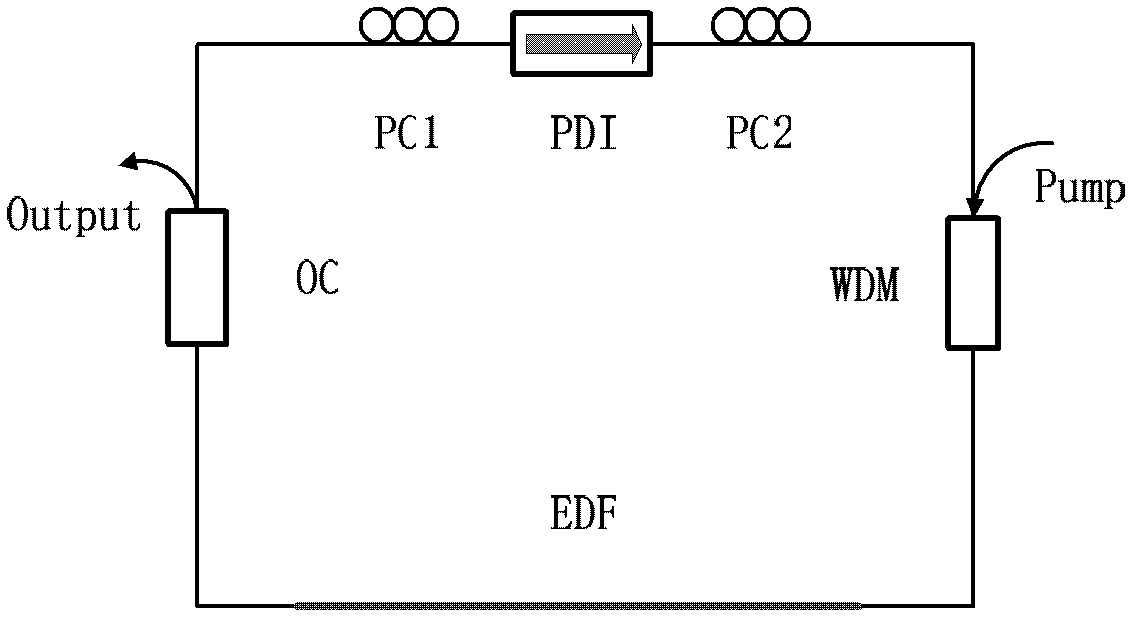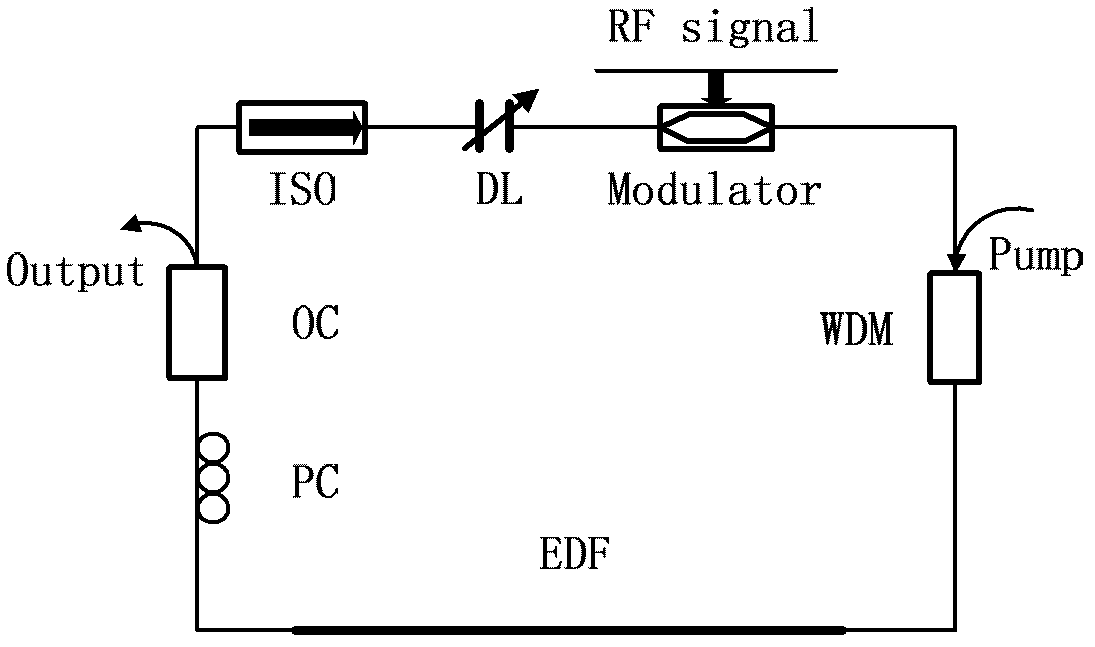Dissipation soliton active mode-locking fiber laser
A fiber laser and active mode-locking technology, applied in the field of lasers, can solve the problems of difficult adjustment of pulse repetition frequency, difficult adjustment of wavelength, wave splitting, etc., and achieve the effect of flexible and adjustable repetition frequency
- Summary
- Abstract
- Description
- Claims
- Application Information
AI Technical Summary
Problems solved by technology
Method used
Image
Examples
Embodiment Construction
[0036] The specific implementation manners of the present invention will be further described in detail below in conjunction with the accompanying drawings and embodiments. The following examples are used to illustrate the present invention, but are not intended to limit the scope of the present invention.
[0037] Figure 4 It is a schematic structural diagram of a dissipative soliton active mode-locked fiber laser according to an embodiment of the present invention. Such as Figure 4 As shown, the laser includes: pump source 100, wavelength division multiplexer 200, gain fiber 300, polarization controller 400, optical coupler 500, polarizer 600, intensity modulator 700, pattern generator 800 and Spacer 900.
[0038] The single-mode optical fiber is sequentially connected to the pump source 100, the wavelength division multiplexer 200, the gain fiber 300, the polarization controller 400, the optical coupler 500, the polarizer 600, the intensity modulator 700, and the spacer ...
PUM
 Login to View More
Login to View More Abstract
Description
Claims
Application Information
 Login to View More
Login to View More - R&D
- Intellectual Property
- Life Sciences
- Materials
- Tech Scout
- Unparalleled Data Quality
- Higher Quality Content
- 60% Fewer Hallucinations
Browse by: Latest US Patents, China's latest patents, Technical Efficacy Thesaurus, Application Domain, Technology Topic, Popular Technical Reports.
© 2025 PatSnap. All rights reserved.Legal|Privacy policy|Modern Slavery Act Transparency Statement|Sitemap|About US| Contact US: help@patsnap.com



